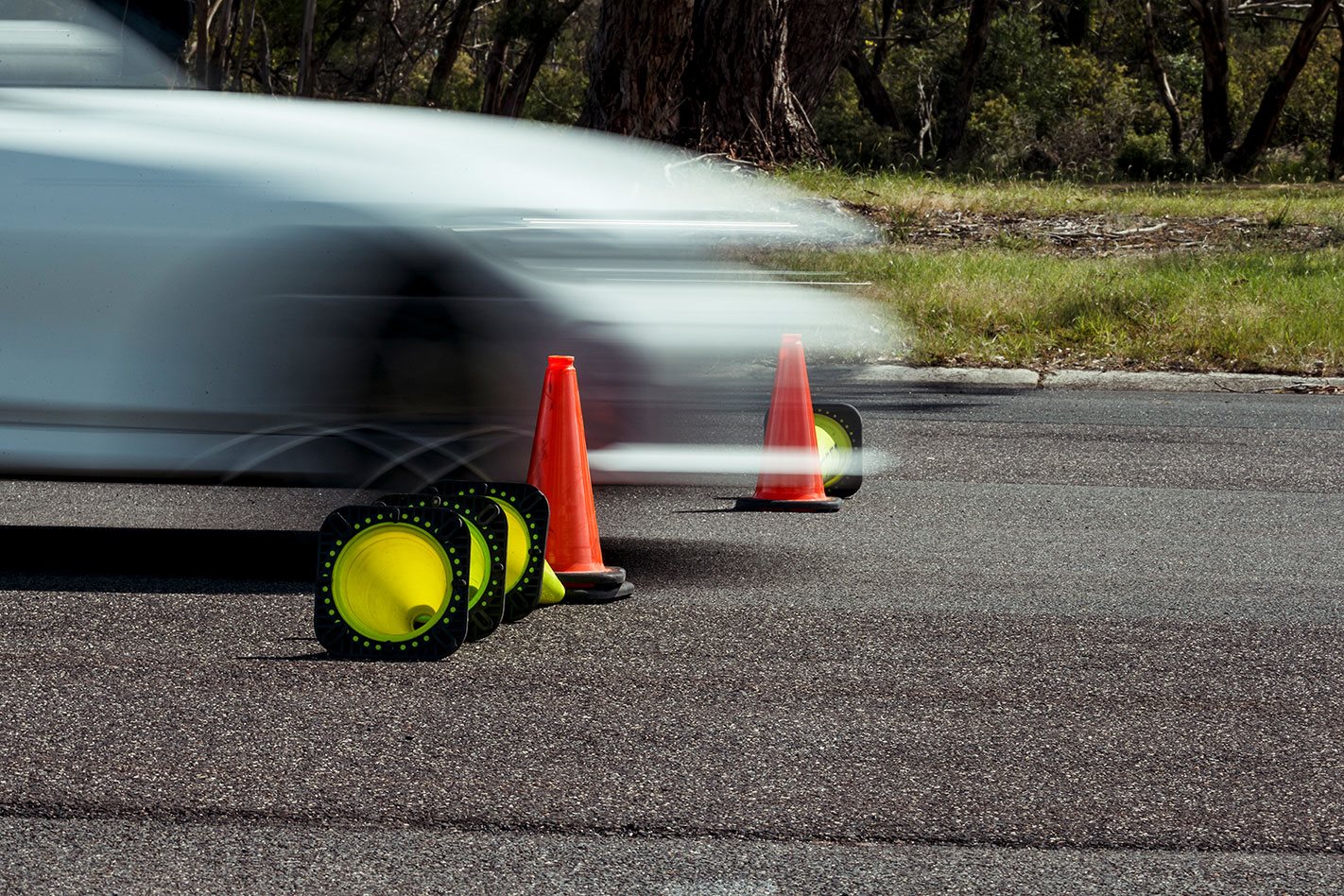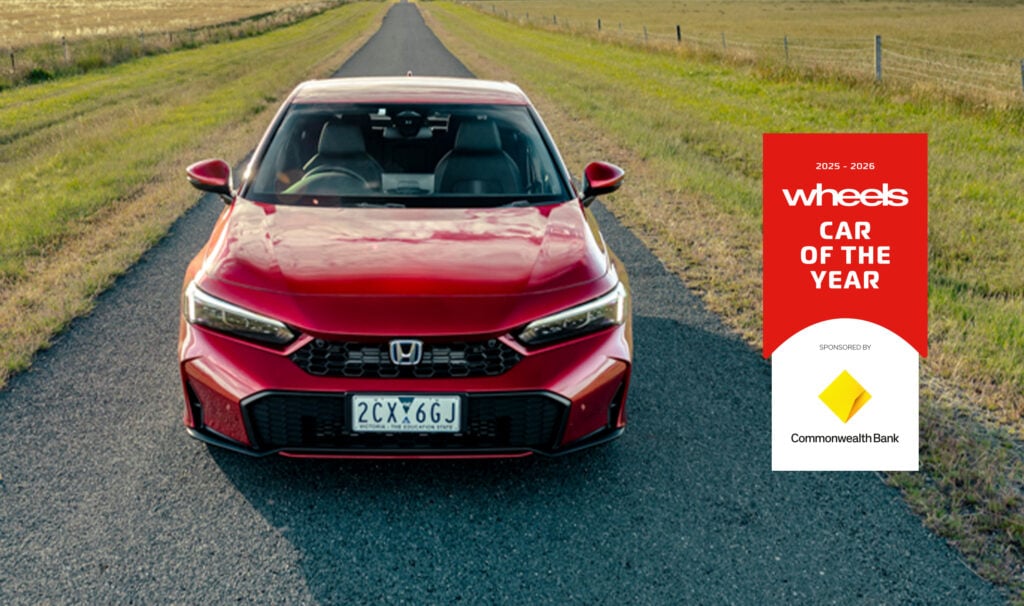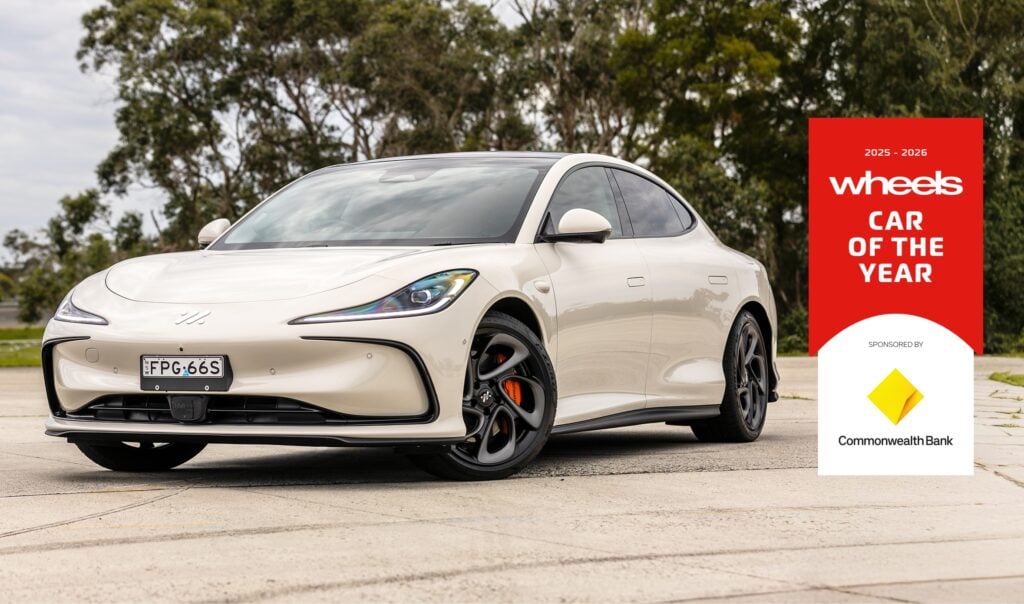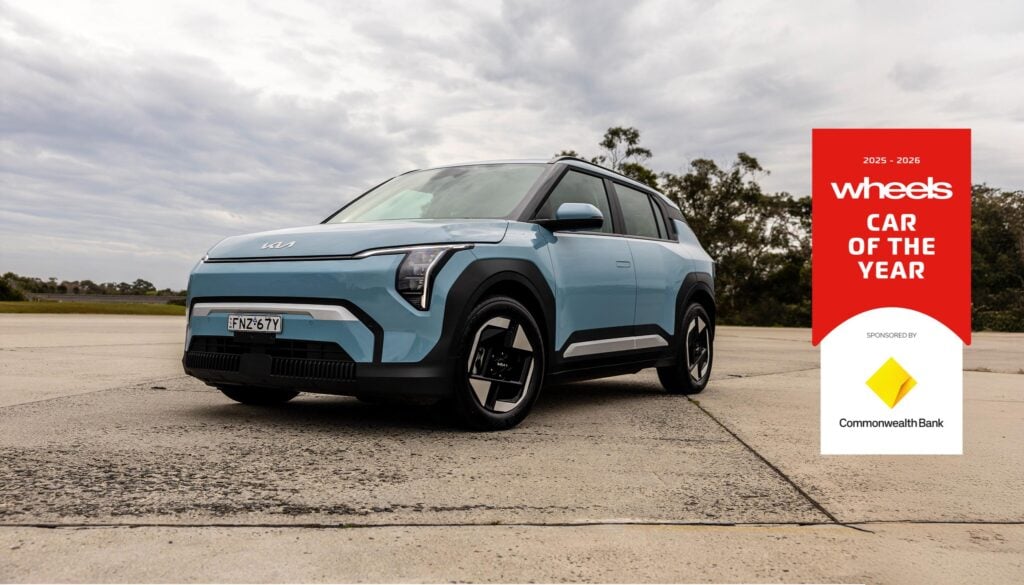Hold up, hold up. It’s not all about how fast a car can go in a straight line that matters. How it stops is vitally important for both performance, and more importantly, safety.
This is why at Wheels Car of the Year we not only test cars from 0-100km/h, but also from 100km/h back down to zero – and it’s carried out on both dry and wet surfaces. So let’s see what’s what.
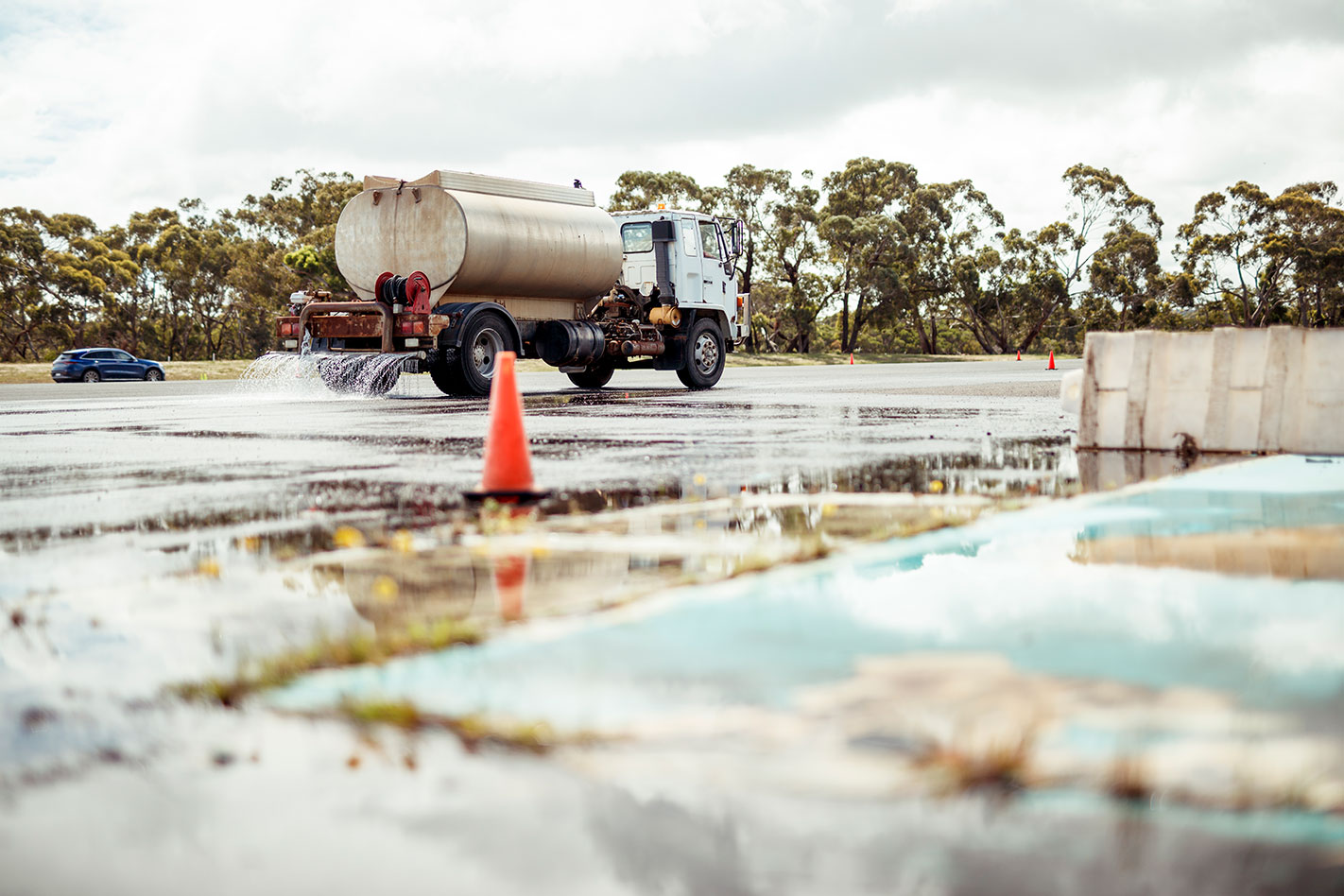
Somewhat surprisingly, the Peugeot 508 wagon had the best stoppers on a dry surface, needing only 35.3 metres to come to rest from the 100km/h limit. What’s more, the booted Pug claimed second place in the wet discipline coming to a halt in 38.1 metres, finishing 0.4m behind the Tesla Model 3 Performance.
However, the data threw a curve ball when the mechanically identical 508 Fastback returned mid-pack results, needing 38.4m to stop on the dry track, before ballooning to 42.0m with some moisture. In regards to the latter figure, that’s a noticeable 3.9m difference between wagon and sedan.
Upon closer inspection, the state of the 508 Fastback’s Michelin Pilot Sport 4 tyres were to blame, with the five-door’s rubber looking noticeably worse for wear compared to the wagon. This proves that the condition of your tyres and the tread depth is vital to their overall effectiveness.
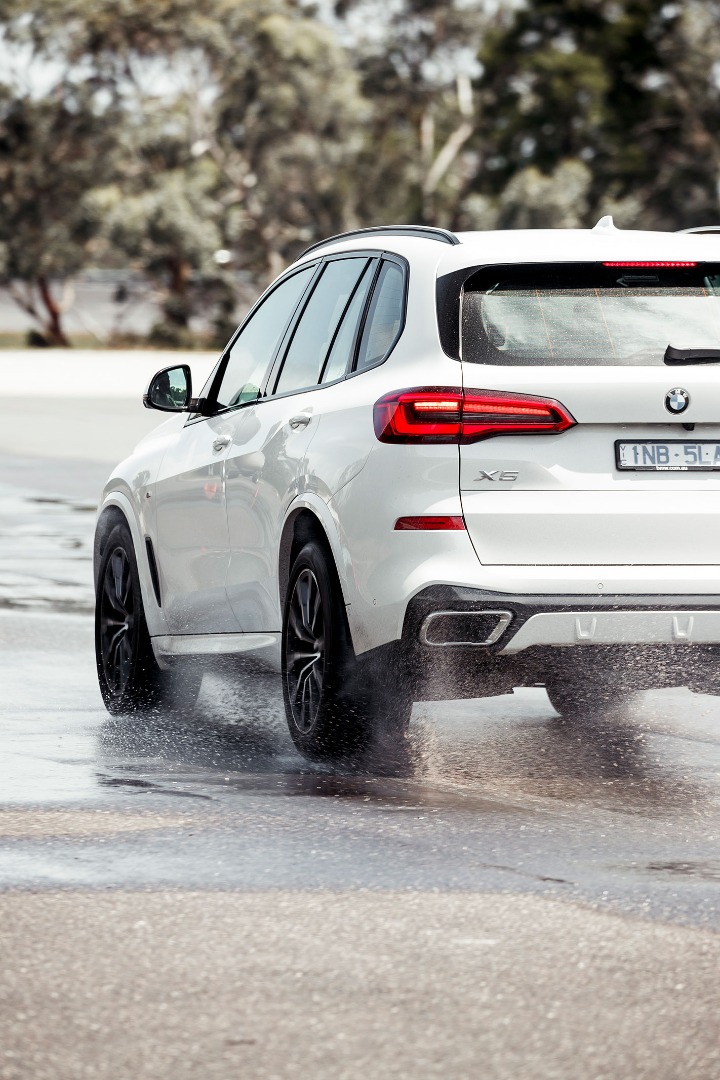
The Porsche 911 Carrera S verified its credentials by finishing second with an averaged wet/dry figure of 35.5m, while the S60 T8 R-Design (35.8m) claimed the last spot on the podium. Interestingly, the more-than-two-tonne BMW X5 30d finished fifth with 36.3m, a really impressive feat given its hefty weight.
As alluded to, the Tesla Model 3 Performance stopped in the least distance with wet conditions, before the impressive Peugeot wagon and a pair of Volvos, the V60 and S60 respectively. However, what is staggering in regards to the Tesla’s effort is that its wet distance was only 50cm further than its dry braking marker. The RAV4 also did well with two of its variants filing fifth and sixth, while surprising, given its Wet mode, the Porsche 911 only just nabbed a place in the top 10.
The wooden spoon has to go to someone, and this time it’s the Range Rover Evoque P250 R-Dynamic rounding up the rear in dry testing. The classy Rangie took 40.8m to come to a halt, which is a full 5.5m lengthier than the winning Pug and even 3.1m more than the Model 3 Performance when the EV is braking on a wet surface.
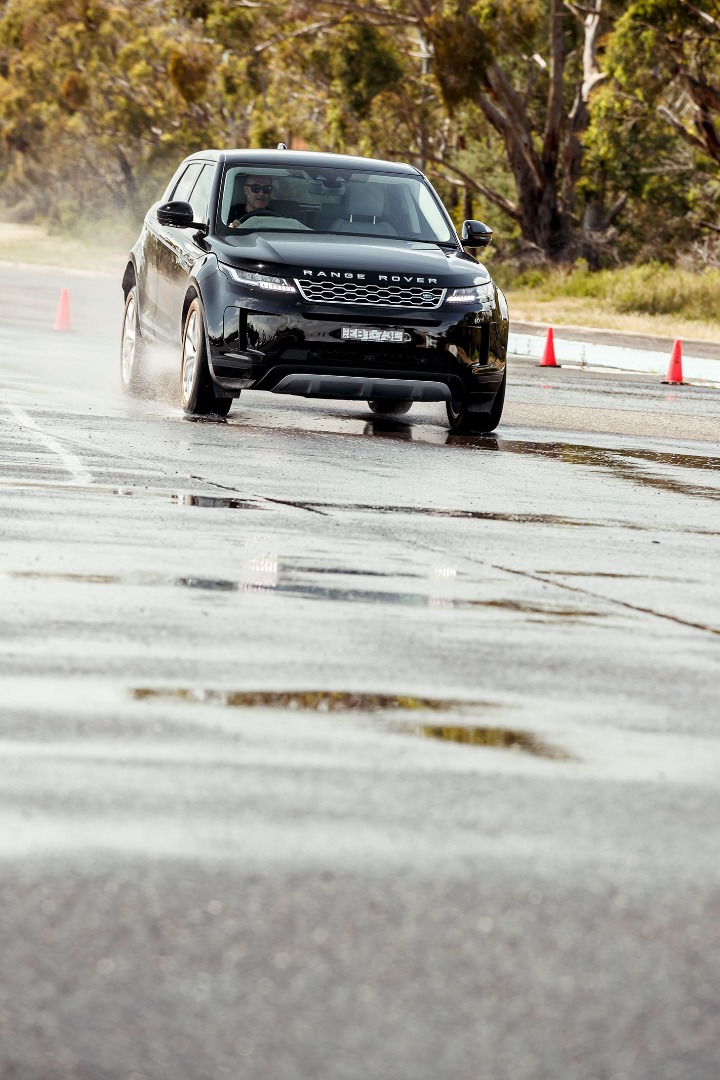
In terms of wet braking, the tail-end honours were clearly claimed by the Genesis G70 3.3T Ultimate Sport with a figure of 48.1m – or a full 1.4m behind the second furthest reading of 46.7m achieved by the Mazda 3 G25 Astina sedan.
For a full rundown of the figures, pick up a copy of the COTY edition of Wheels magazine from February 3.


